Marvell Invests In Next Gen SSD Controller Technologies: NVMe And LDPC
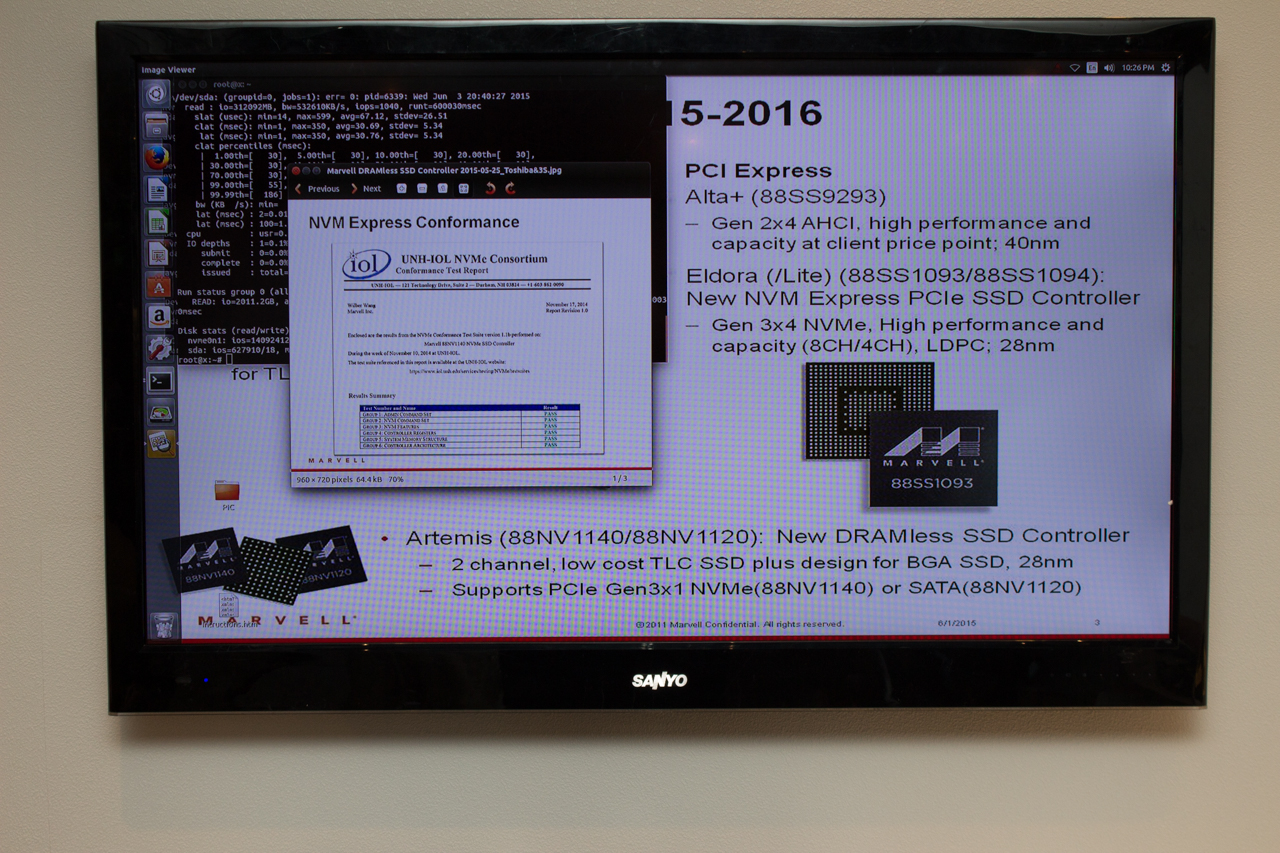
Marvell took over a large hall at the Grand Hyatt in Taipei to show off the company's latest innovations. Anyone with a drop of tech running through their veins could spend hours moving from one high technology demo to the next, all with equal enthusiasm. Today we're looking specifically at flash controllers, though.
Before we get started, let's preface this editorial with the current shipping flash controllers. Marvell's Altaplus (Alta+ in the image above) is currently shipping but only in Kingston's HyperX Predator SSD. You can read our review of the HyperX Predator 480 GB here. Altaplus was an exciting controller when we first learned of its existence, and it was Marvell's first PCIe 2.0 x4 controller to hit the market.
Between CES 2014 and the HyperX Predator launch, Samsung fired off the first PCIe 3.0 x4 controller, SM951 and then the follow up NVMe model, SM951-NVMe. The higher performing Samsung products quickly derailed Marvell's momentum.
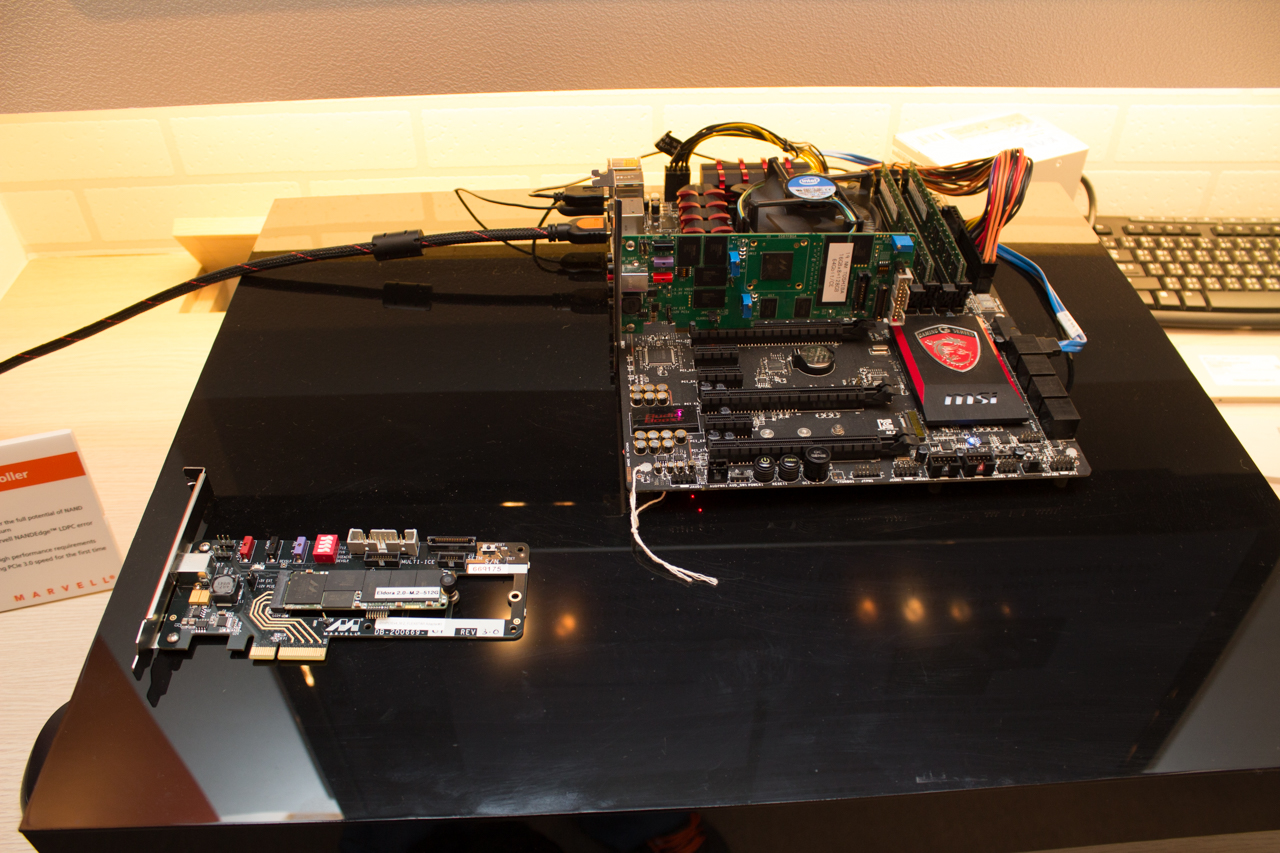
To get back on track and bring NVMe to market, Marvell is preparing Eldora (88SS1093) and Eldora Lite (88SS1094) with the NVMe protocol passing through PCI Express 3.0 x4. Eldora is the powerhouse performance controller that takes advantage of 8-channels for add-in cards (AIC) and m.2 form-factor devices.

At the time of this writing Marvell has certified the Eldora platform for use with Toshiba's 15nm lithography process for SLC, MLC, TLC and even 3D BiCS NAND. The controller takes advantage of Marvell's NAND Edge LDPC ECC and management features. Products up to 2 TB are supported but we suspect the high capacity products will only come from the 8-channel Eldora part and not Eldora Lite.
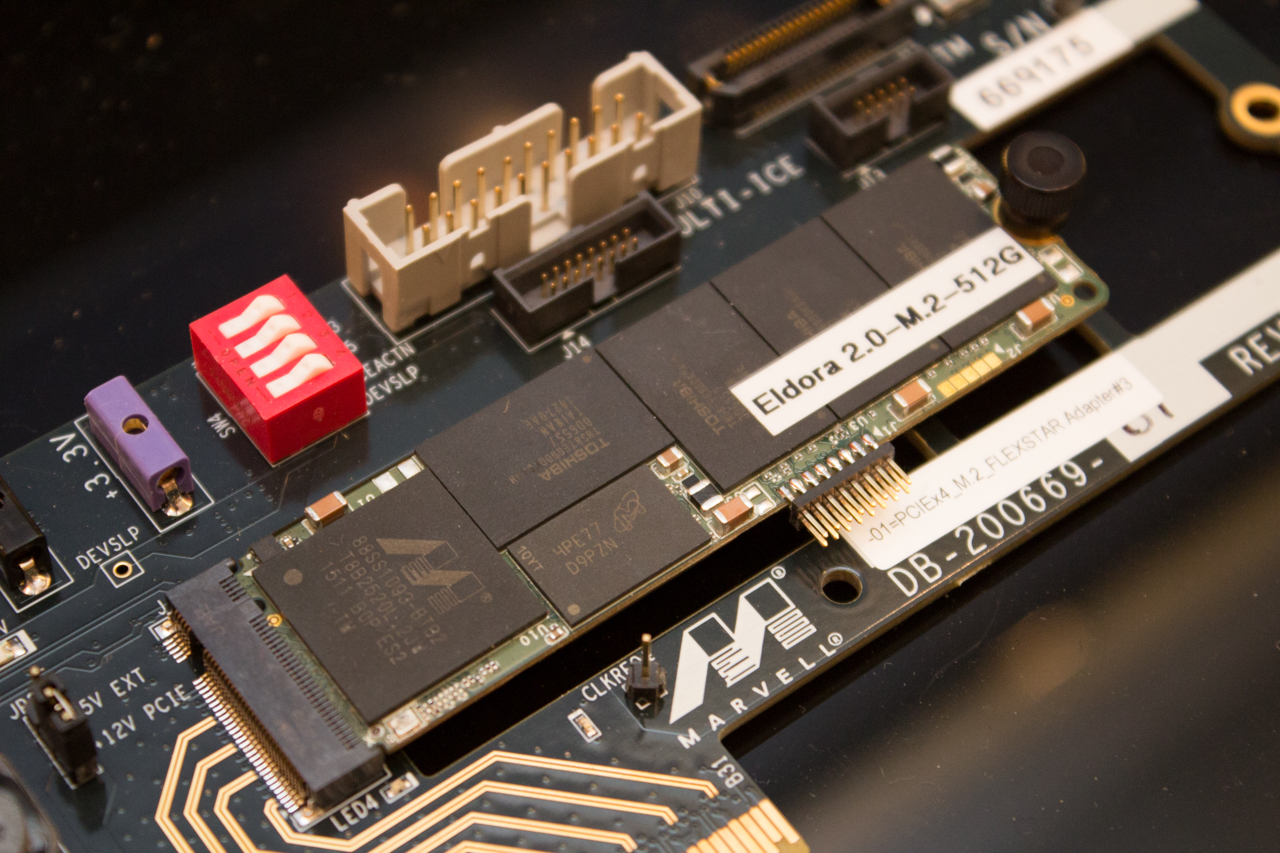
The Marvell 88SS1093 part is so fast that the company's display even referred to it as a RAMDisk. While we won't say the performance is ready to rival DRAM, the numbers we saw in the booth were impressive and superior to everything on display at the show, roughly 2900 MB/s.
That's not to say Eldora Lite is anything to pass over. PCIe paired with NVMe delivers better than traditional 8-channel SATA SSD performance in every imaginable metric, even power consumption. Since many of these m.2 parts need OEM customers before coming to market, low power is a high priority. We expect Eldora Lite to ship in several m.2 2280 form factor products by early 2016.
Stay On the Cutting Edge: Get the Tom's Hardware Newsletter
Get Tom's Hardware's best news and in-depth reviews, straight to your inbox.
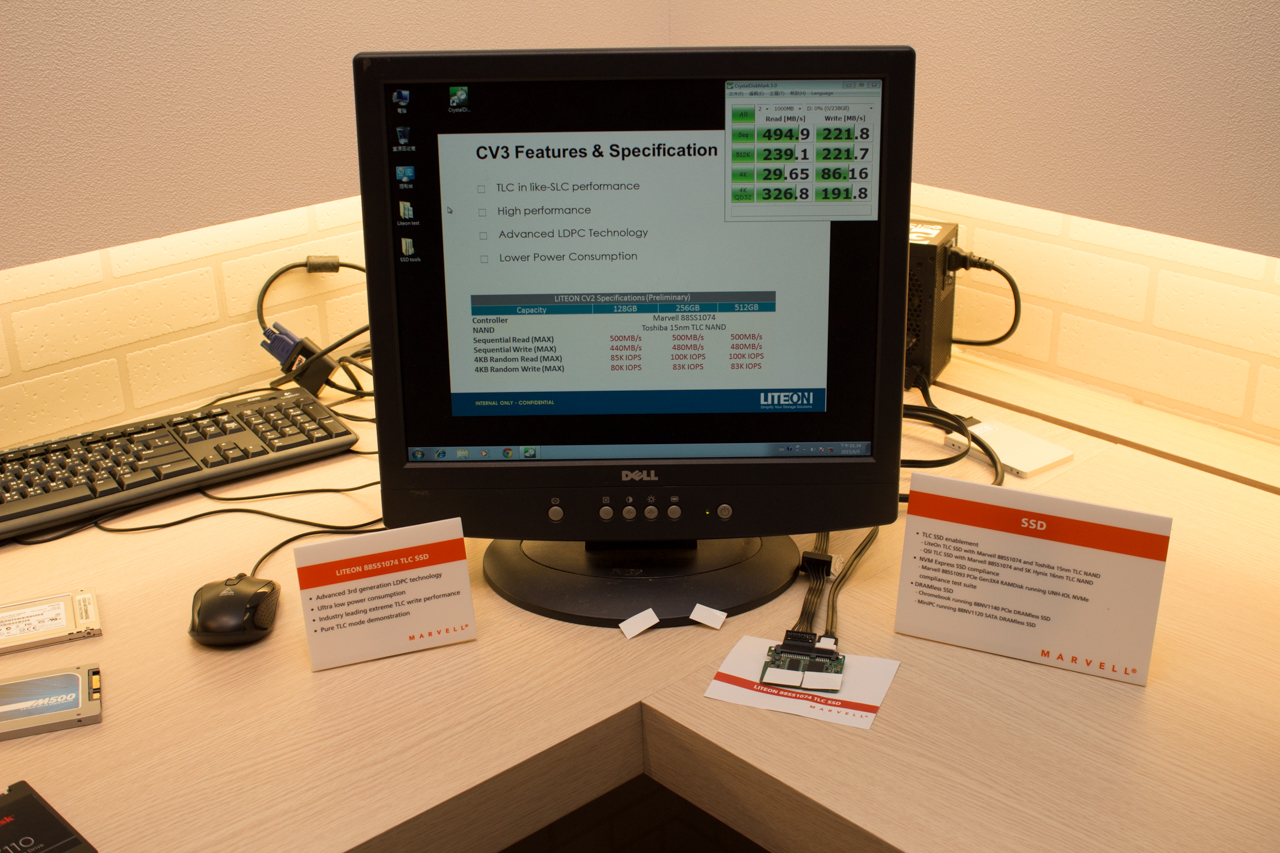
Marvell's 88SS1074 SATA 6 Gbps controller was also on display, paired with both Toshiba 15nm TLC and Hynix 16nm TLC.
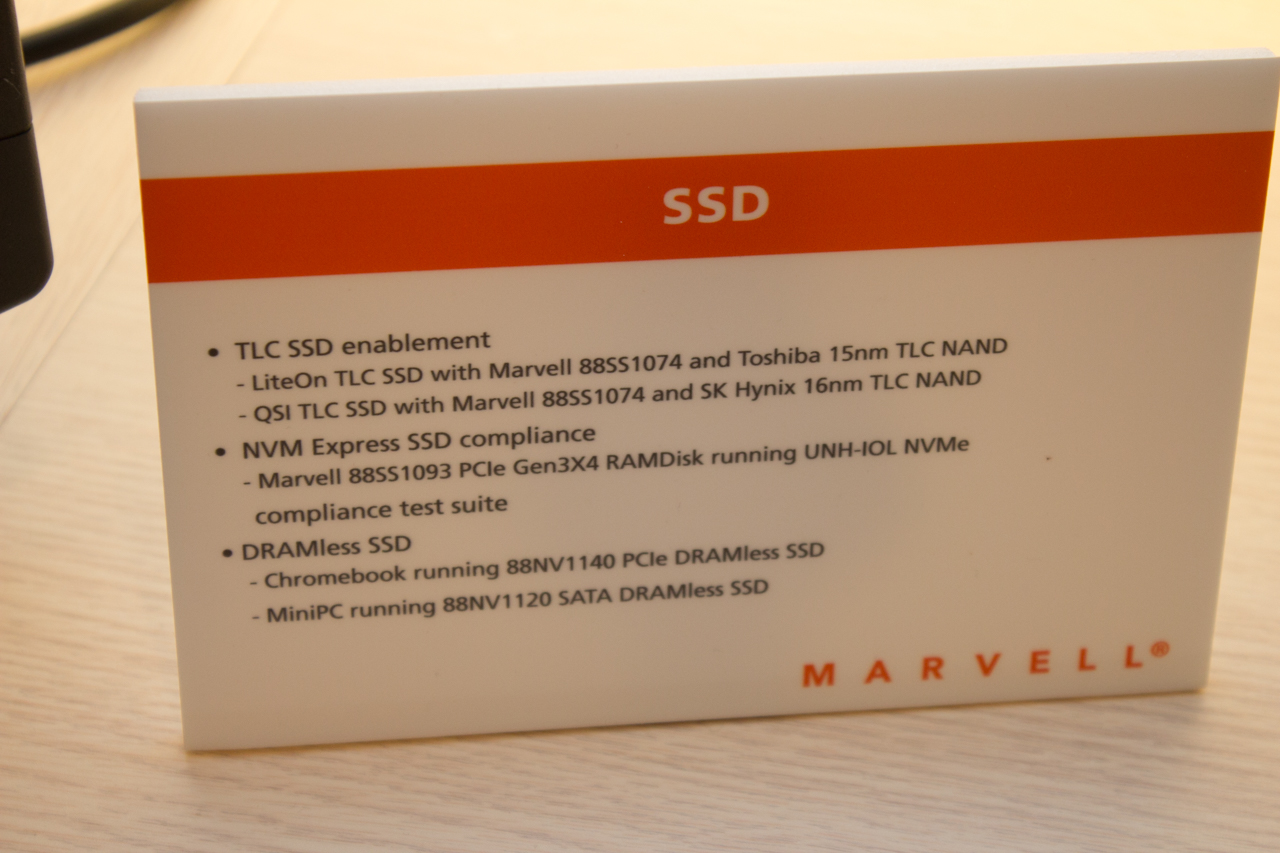
The units on display were actual products nearing retail availability from LiteOn and QSI, an SSD manufacturer servicing the Chinese market.
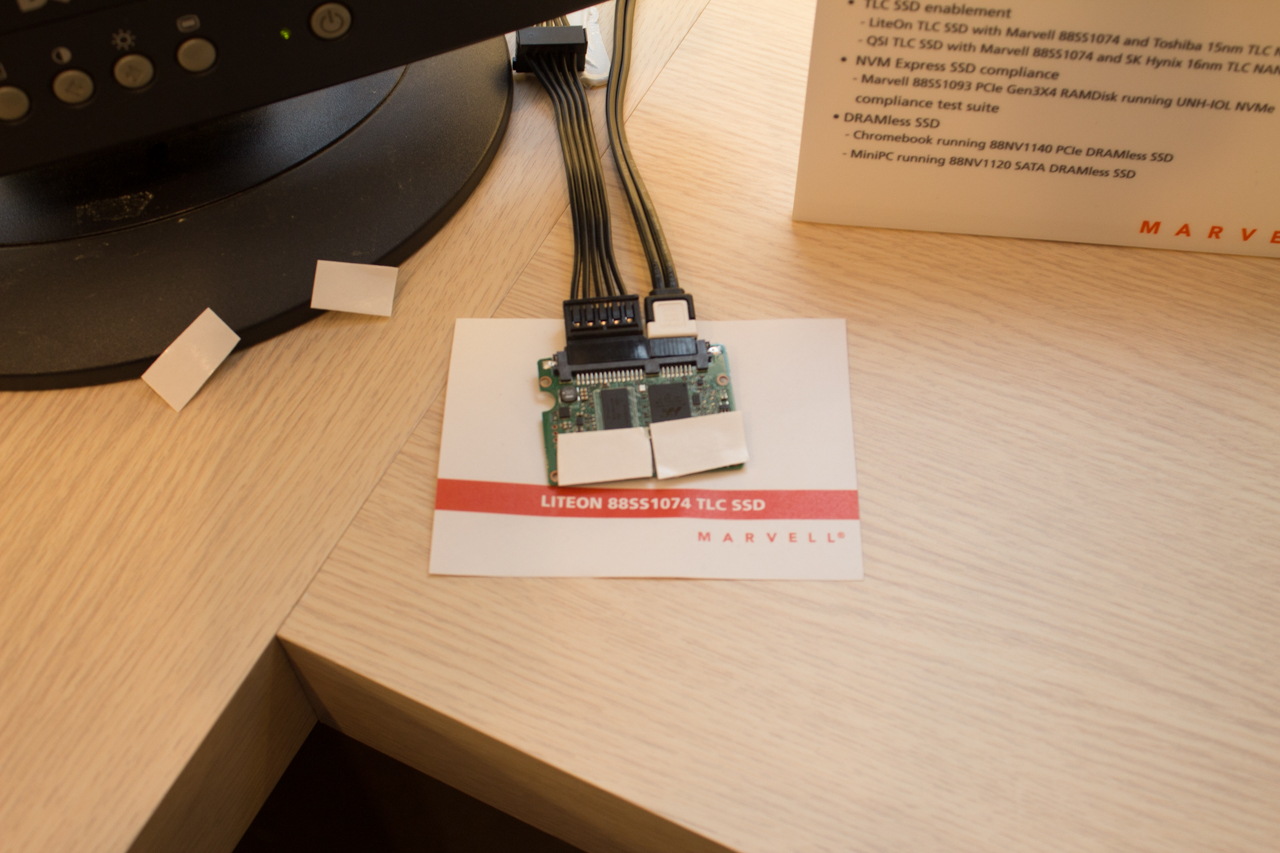
We did learn something interesting at the Marvell booth. Toshiba has an embargo on 15nm TLC information until next month. We've only talked about it a few times so far in Computex coverage. That's why Marvell has tape over the LiteOn CV2 (CV2 is the product name) with an 88SS1074 and Toshiba 15nm TLC product in the booth that delivers 494 MB/s sequential read performance and 221 MB/s sequential write performance.
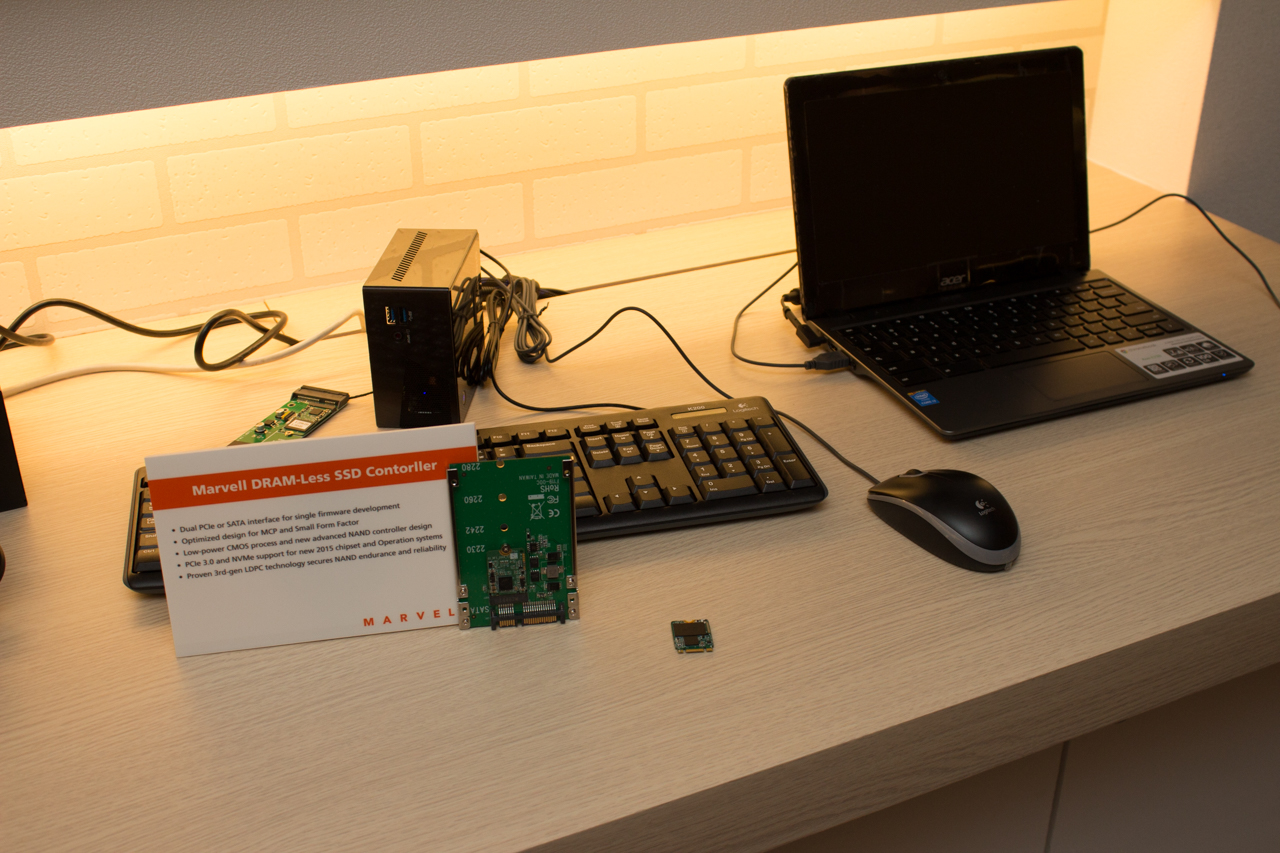
Finally, we have Marvell's DRAMless controller that merges the two storage themes from the show. We've talked about The Race to the Bottom in several other stories, and NVMe as well.
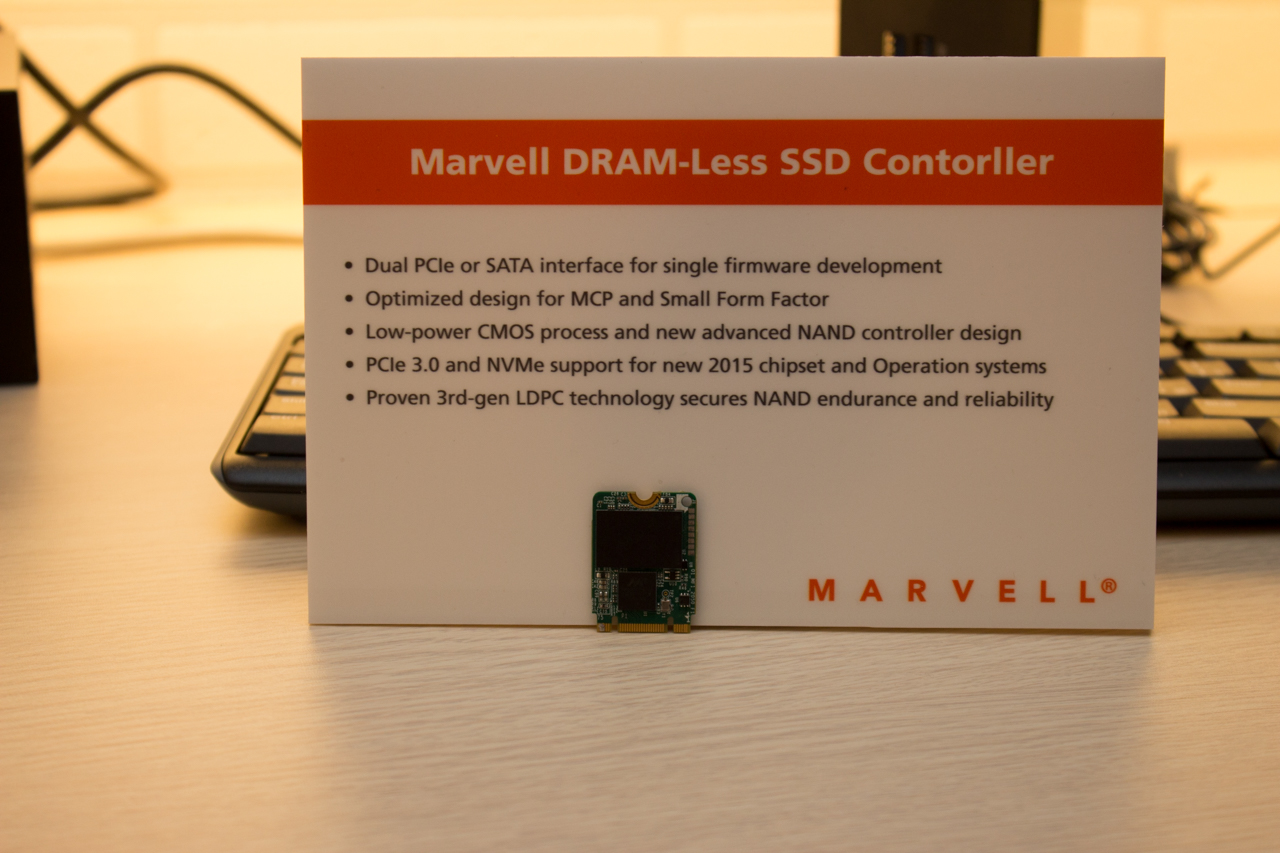
To our knowledge, Marvell is the only company showing a working product that uses the NVMe protocol in a DRAMless design. The new dual purpose controller also runs AHCI over SATA 6 Gbps. Built on Marvell's proven 28nm process, the new parts bring performance to Chromebook type systems as well as very small external storage systems.
We watched a Full HD movie running on an Acer Chromebook at one display. The video progressed without issue even though the system is made from all low-cost components. Adding flash to a system like that helps to hide low performance in other areas.
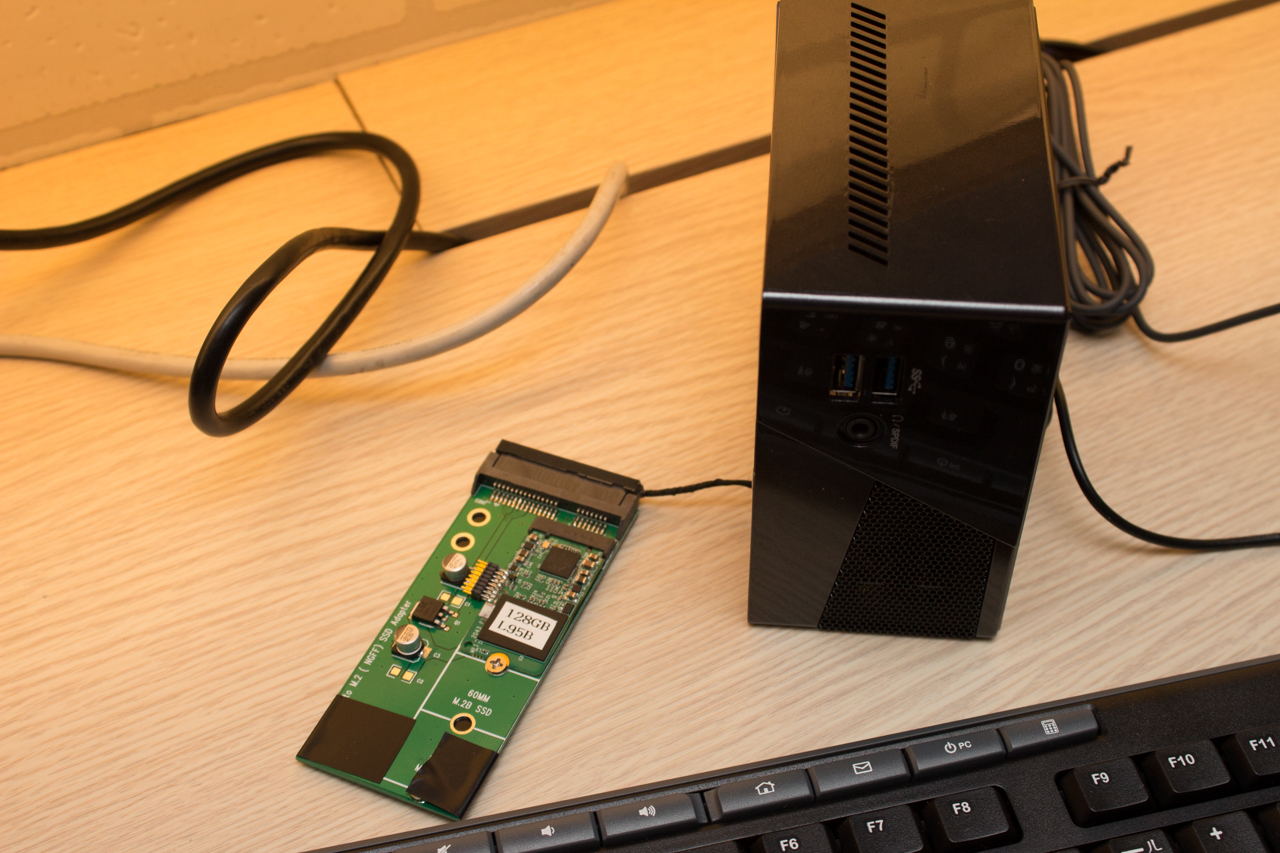
We also found the DRAMless design used in a small form-factor PC with an m.2-to-SATA 6 Gbps adapter. This solution could easily shrink in size without allocating room for a bulky 2.5" storage device.
